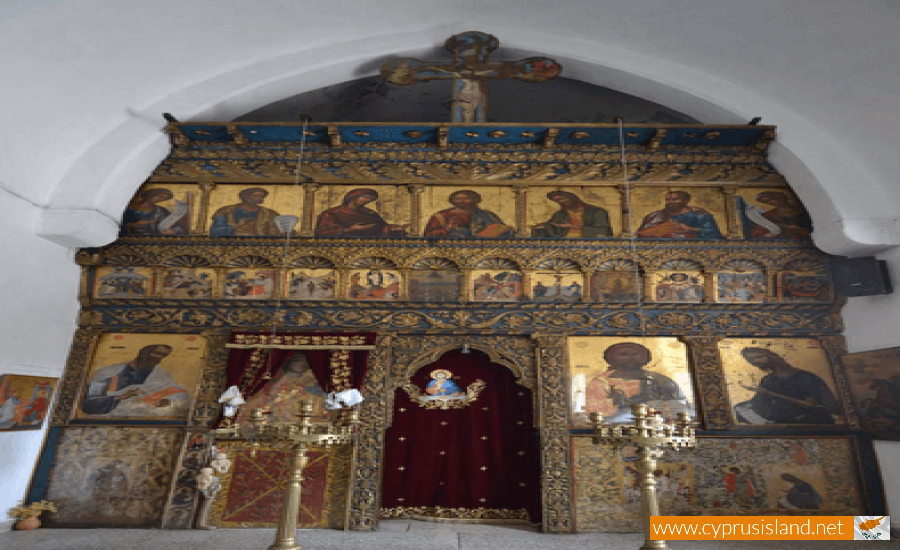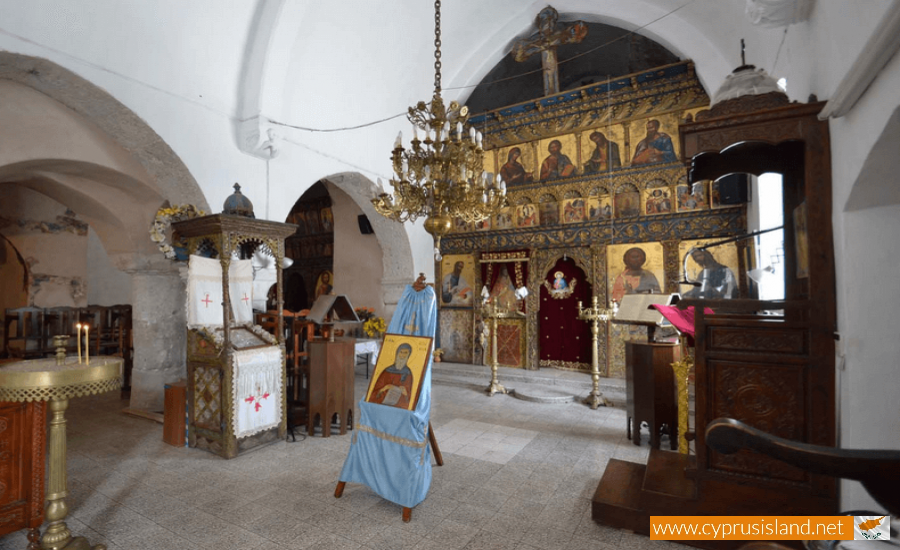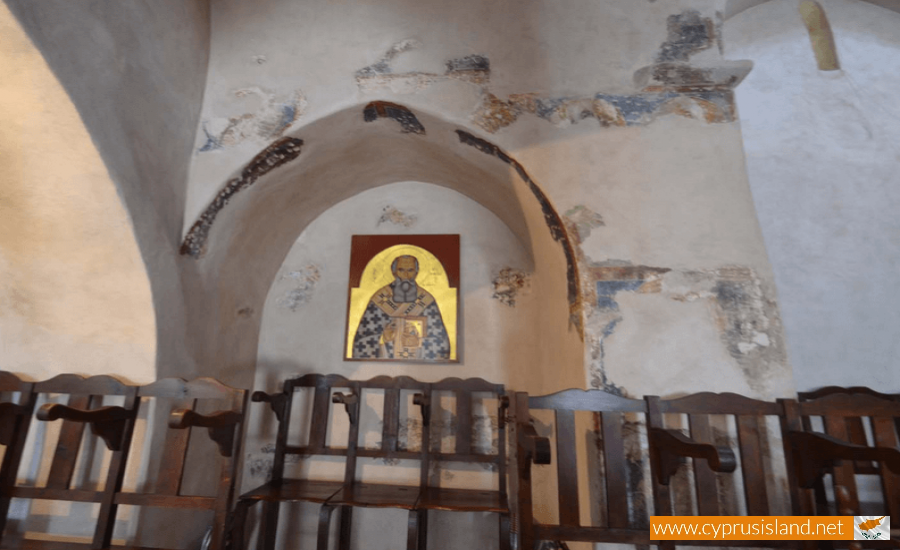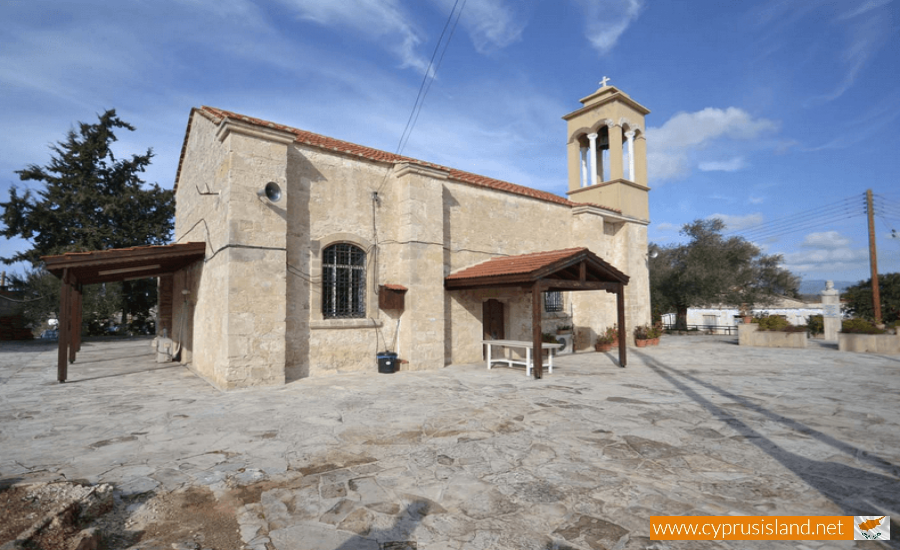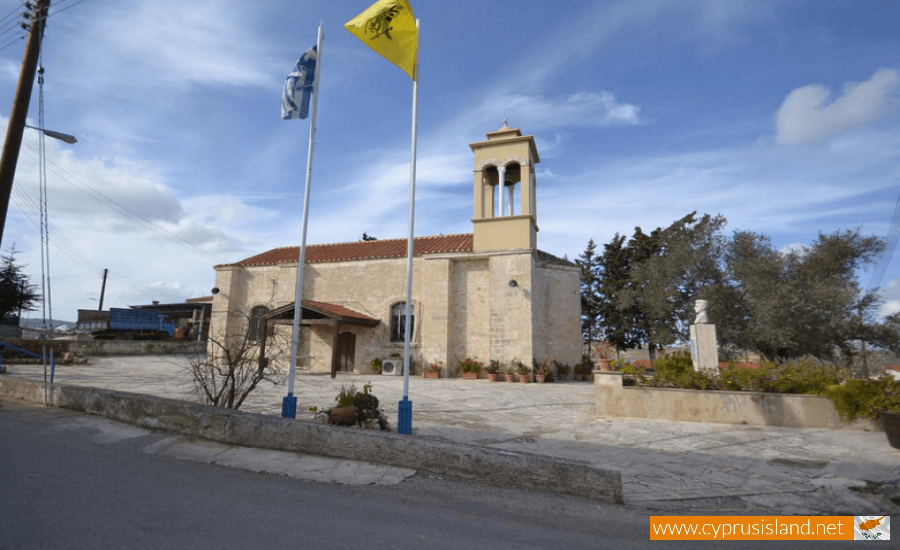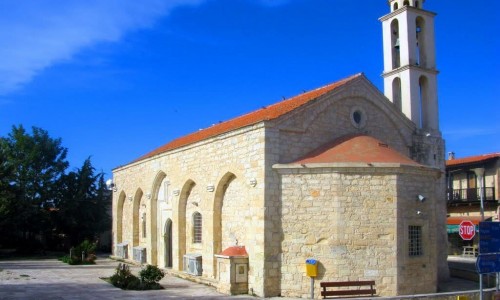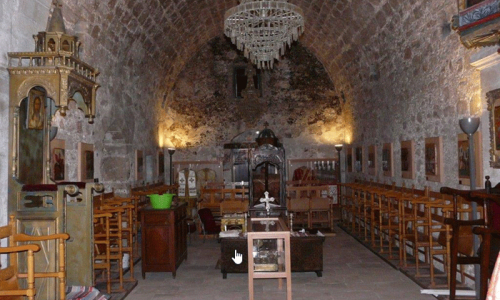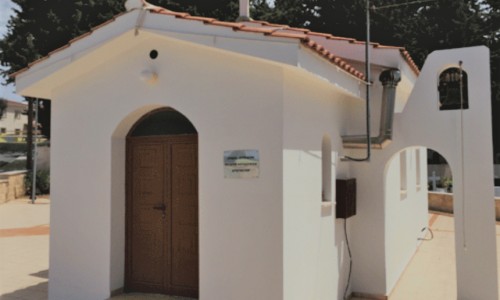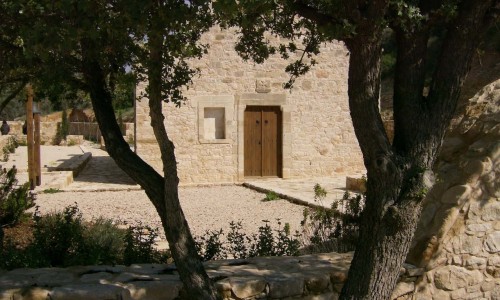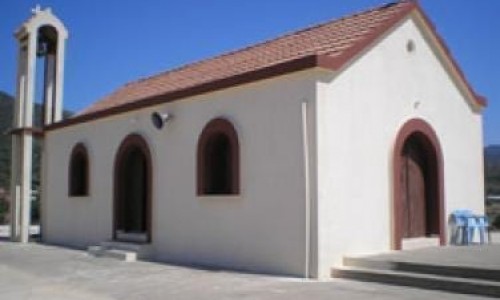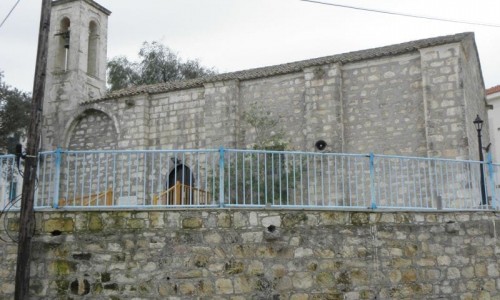Panayia Chryseleousa Church , Polemi
The Panagia Chryseleous Church is located in the village of Polemi in Paphos. The church as the name suggests, is dedicated to Panagia Chryselousa. It is a building of the 12th and 13th centuries, which was extended during the beginning of the 18th century in 1723. In particular, the south wall of the original church was demolished in order to add the new section. The extension of the church at the south part still remains today and has survived the catastrophic earthquake that occurred in 1953. The rest of the church however sustained damages. For example, the bell tower that was constructed in 1723 was completely destroyed. A few years after the earthquake a new, one was built in its place, even though it was inconsistent with the rest of the old church.
Architecturally, the part of the old church, the surviving building of the 12th century, belongs to the type of single-aisled cruciform with a dome. It also incorporates a Byzantine style narthex. The additional part of the church is considered a simple structural basilica. The dimensions of the entire building are about sixteen meters long and thirteen meters wide.
During the end of the 20th century, in 1962 , the church was renovated. More specifically the white marble was replaced with mosaics of a dark colour. During the same year, new roof tiles were placed.
Particularly imposing is the wood-carved iconostasis, which consists of "rare carvings". Unfortunately, we do not know who created the iconostasis or whether it is older than 1723. The iconostasis is adorned with icons of the 15th century and later. Among the icons of the 15th century are the four despotic icons, of Panagia Chryseleousa, Gregory the Theologian and John the Baptist. Also, the icons of the Dodekartos, in other words of the festive cycle of the iconostasis, are also dated to the same century.
Finally, the centre of the iconostasis is dominated with icons of the 15th and 16th century, for example Panagia Deomeni, Christ the Life-Giver, as well as the Apostles Peter and Paul.
In the oldest part of the church, there are some hagiographies, which seem to have been covered with a thick layer of plaster, probably to protect them from the Turks during the Turkish occupation. It is worth noting that in the summer of 2006, the Department of Antiquities has planned the restoration of the frescoes.


